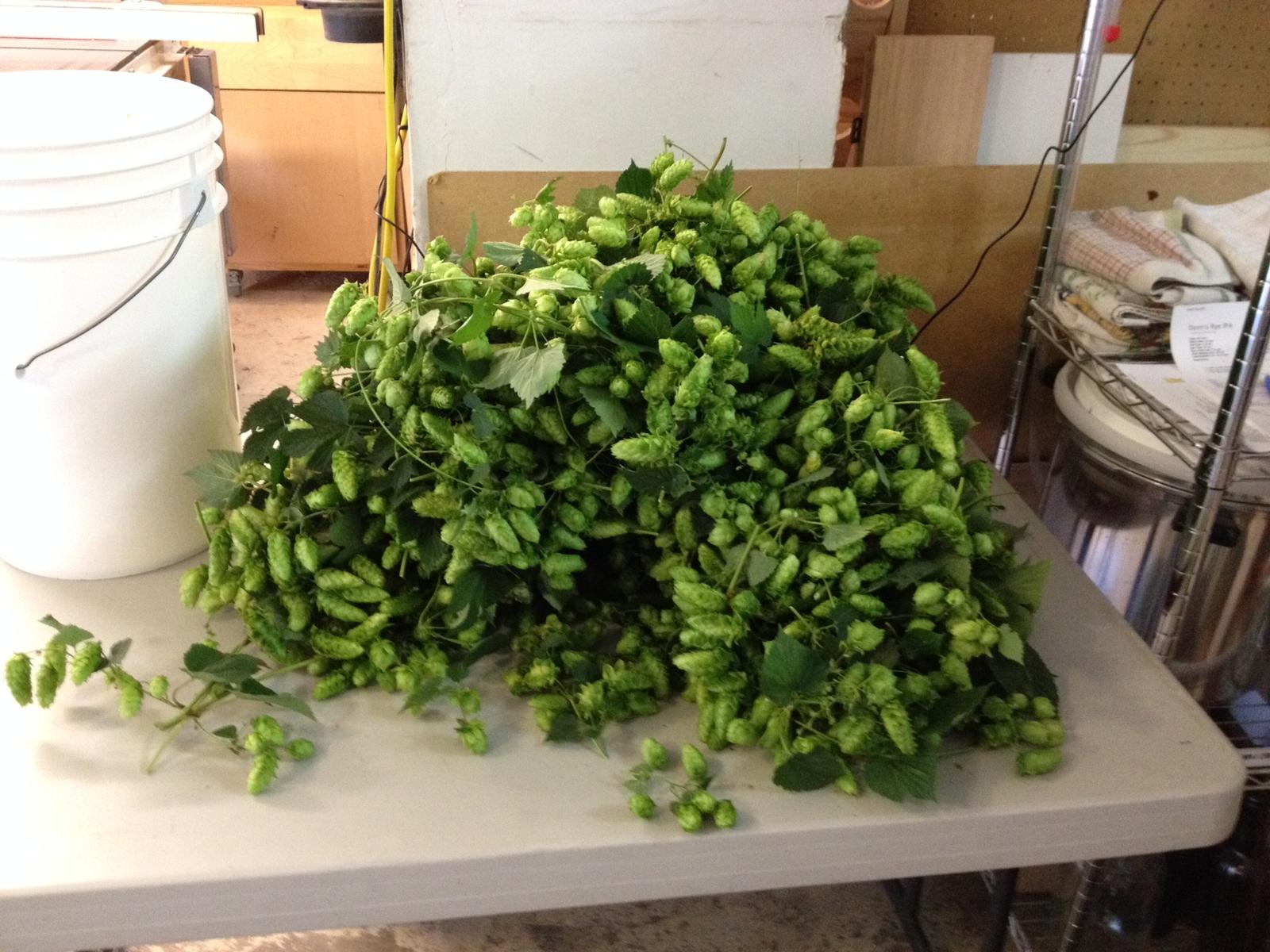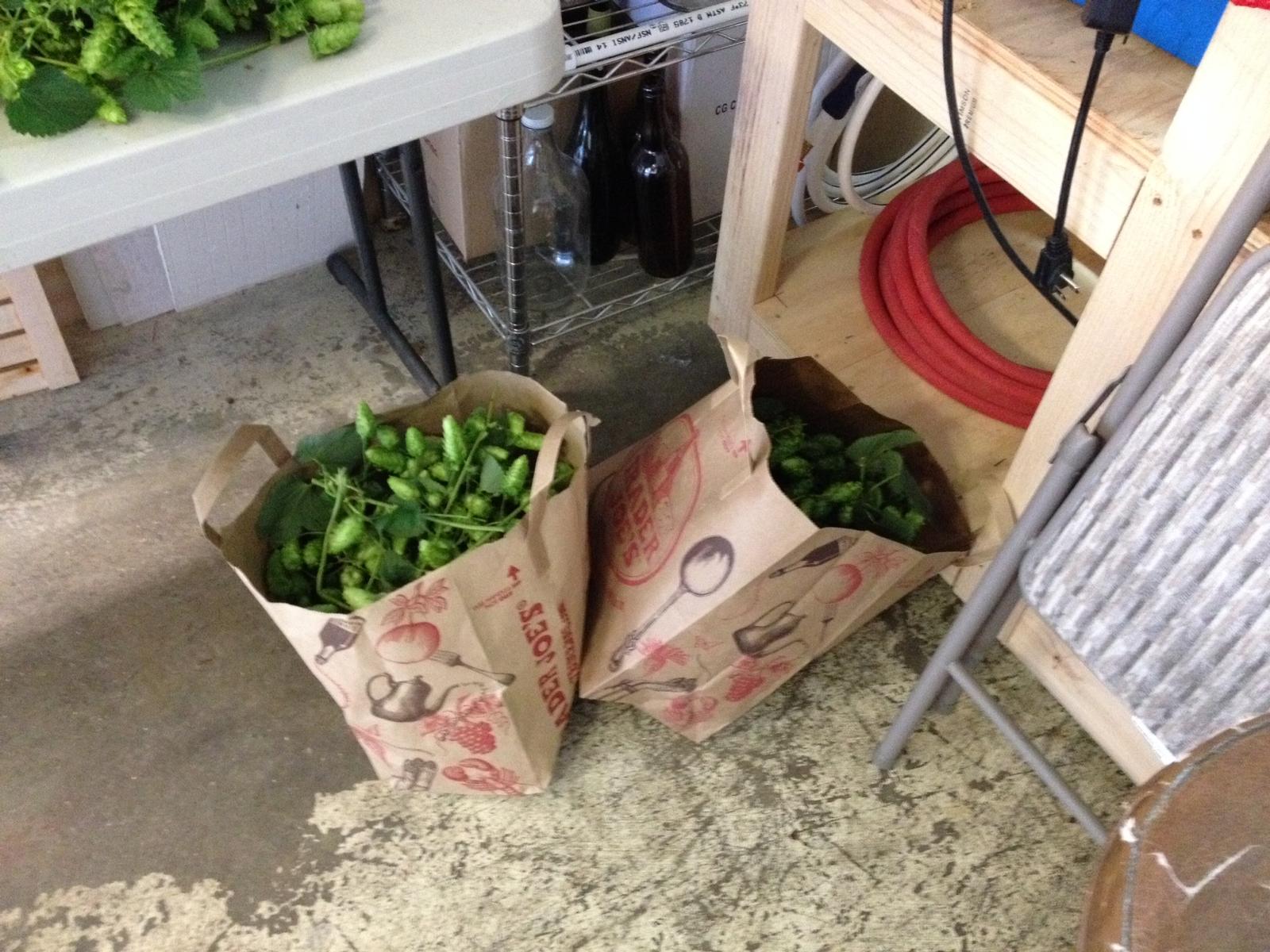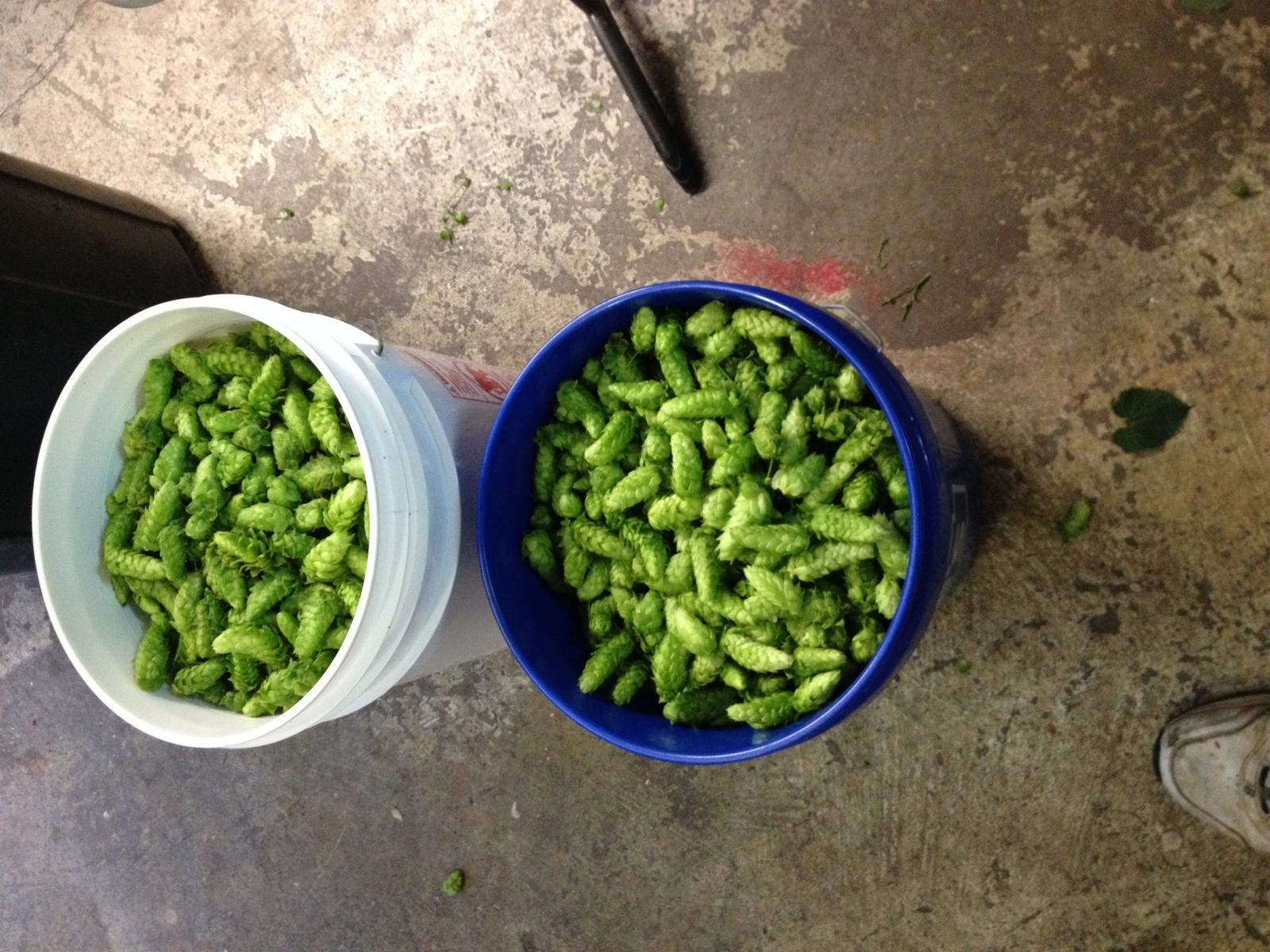'Tis the season for drying hops, and last year I used the front door screen and some window screens. Keep in mind that last year, end of summer temperatures were hot and sticky. This year, they are not and have been enjoying the windows open this year. Using this as my reasoning to build yet another piece of brewing equipment, I took a trip with my son to Menards and nabbed the equipment.
I picked up two 1/2" sanded 4'x4' plywood panels, an 8' 2x6 plank, 1 1/4" Brad nails, and some aluminum reinforced door screen. Total bill of $49. I also had some leftover 1x1 shanks. About 10 feet of that.

I measured out 6" sections by 24" for the oast walls. I left two 24"x24" squares for lids. I cut the 2x6 into equal sections of 22.5" so that it measures out to an even 24" when put together. The shanks were cut to twenty-four 5" lengths. After cutting both panels and all the wood, I began assembly. I screwed the base together using the 2x6 and 3 inch screws.


I picked up two 1/2" sanded 4'x4' plywood panels, an 8' 2x6 plank, 1 1/4" Brad nails, and some aluminum reinforced door screen. Total bill of $49. I also had some leftover 1x1 shanks. About 10 feet of that.

I measured out 6" sections by 24" for the oast walls. I left two 24"x24" squares for lids. I cut the 2x6 into equal sections of 22.5" so that it measures out to an even 24" when put together. The shanks were cut to twenty-four 5" lengths. After cutting both panels and all the wood, I began assembly. I screwed the base together using the 2x6 and 3 inch screws.

























